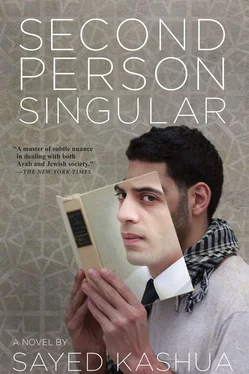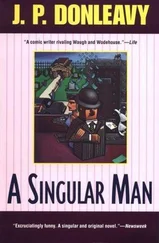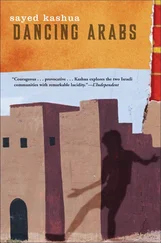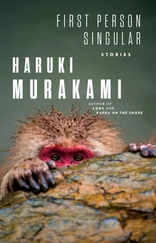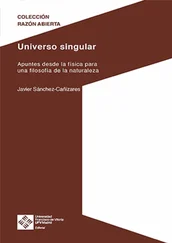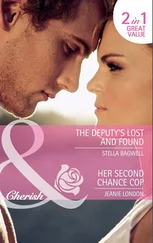I bought a monthly bus pass and spent a lot of the time going from bus to bus, equipped with Yonatan’s Discman and the CDs I chose each morning. They were my company until the next shift.
Sometimes I’d fall asleep on the bus and the drivers would wake me up at the last stop. I always apologized, got off the bus, and waited for another one. Most mornings I was in the Old City, where I’d eat a late breakfast of hummus and fava beans. After that I’d take a bus to Sacher Park and sit down with my book under a tree, passing the hot hours of the day in the shade. Sometimes I’d fall asleep, but not usually. Then I’d walk up to the nearby Nachlaot neighborhood, take a walk through the marketplace, go up King George, down Ben Yehuda, and around to Nahalat Shiv’a. About an hour before my shift started, I’d get a falafel sandwich or two. Half an hour later, I’d take a bus from downtown to Beit Hakerem.
A week of endless wandering was enough. I realized there was no way I could go on like that. This was in early September and I knew that soon Jerusalem would start to get cold. What would I do then? What would I do when it rained? At first I thought I’d just go to the university and spend my time in the library, but I didn’t want to run into old acquaintances from school or the guys from the office or, least of all, Leila. At some point during the day I always thought about going back to my mother’s house, but that notion retreated under inspection.
It didn’t take me long to get back in the habit of sleeping at night. At first for just an hour or two, but within a week I was up to four hours a night. The rest of the time I soothed myself with music, books, and, especially, the camera. I wished I hadn’t burned through all the film on the first night and that I could see the pictures I had taken. I played with the camera every night, putting pictures into focus and pushing the button even though I knew nothing would happen. I wasn’t sure what you did with the film that was already spent, how you took it out and got it developed. One morning, though, feeling audacious, I snuck the camera into my bag and took it out of the apartment for the first time.
“Wow,” said the shopkeeper in the Armenian Quarter as he sipped his coffee, “this is an excellent camera. Russian. They don’t make them like this anymore.” He gripped the camera, looked through the viewfinder, and started to mess with the lens and a few other dials. “There’s nothing like a 50mm lens,” he said, “it’s the best. No zoom, no nonsense, just like in real life.” I told him I had bought the camera from some Jewish guy and that I was still trying to figure it all out. “Does it still have film in it?” he asked, looking at the knob and the numbers.
“Yes,” I said, nodding.
“Do you know how to take it out?”
“No,” I said, trying to smile. “I mean, I didn’t want to ruin it.”
“Here, look,” the Armenian said, pushing a button on the left side of the the camera and swiveling a little handle. “You have to keep this pressed the whole time,” he said, showing me the button, “and you swivel this all the way till the end. Here, listen.” We both stayed quiet and waited to hear the sound of the film safely back in its roll. Then he pulled a little lever and the back of the camera popped open, the roll of film visible. “That’s it. You take it out like this. This roll’s black and white. You want it developed?”
“Yes,” I said, and the Armenian popped the roll into an envelope and wrote my name on it.
“It’ll be ready tomorrow,” he said, to my great disappointment. I had thought it would be just a matter of minutes.
“You want a new roll?” the Armenian asked.
“What? Oh, yes, yes, thank you,” I said, consoled by the prospect of taking more pictures.
“Black and white?”
“Yes,” I said, “black and white.”
“What ISO speed?”
“Excuse me?”
“The ISO speed relates to the film’s sensitivity to light. The higher the number the faster it responds. There’s one hundred, four hundred, and more. Do you shoot at night, too?”
“Yes,” I said.
“Take the four hundred then,” he said, grabbing a roll off one of the shelves. “Do you know how to load it?” he asked, and without waiting for an answer he popped open the back again, made sure I was paying attention to what his hands were doing, and put the film in the chamber. He fed the front end into a spool and hit the shutter-release button.
“The first two or three frames are goners as soon as the film is exposed to the light so just advance right on through them.”
The film cost fifteen shekels and the Armenian, who saw the surprise on my face, said, “I gave you the highest quality stuff.” I put the camera around my neck and headed out to the Old City.
EIGHTEEN SHEKELS
“Each picture’s a shekel,” the Armenian told me with a smile the next morning, and I cursed my new hobby under my breath. “All told, it’s eighteen shekels,” he said, handing me a bright yellow envelope. It took a moment until I understood.
“Eighteen? Why eighteen?
“Because all the other ones were overexposed,” he said. I knew right away that the eighteen that survived were the ones someone else had taken before me. The little wheel had been on the number 21 and I already knew that the first three shots couldn’t be counted. I was crestfallen and the Armenian made a gesture with his hand for the camera.
“Do you know what an aperture ring is?” he asked and all I did was shake my head. “You took a picture in the dark and didn’t compensate by slowing your shutter speed,” he said, watching to see by my response if I had any idea what he was talking about.
“Look through the viewfinder,” he instructed me, putting the camera near my face. “You see that little needle moving left and right?”
“Yes.”
“That’s the aperture. When it’s in the middle it means you won’t over- or underexpose a picture. Where is it now? Closer to the minus or the plus side?”
“The minus,” I said, and I wondered how I hadn’t noticed those signs staring at me from deep within the viewfinder.
“That means there isn’t enough light. You either didn’t open the aperture wide enough or you put the shutter speed on too fast a setting. You have to learn how to play with these things. Here, let me show you.”
The Armenian took the camera and started tinkering with a button I hadn’t seen before.
“This is the aperture,” he said. “You can open or close it depending on how much light you want to let in.”
He toyed with the ring of the lens, with something that said f-stop on it, and showed me how the small numbers let in a lot of light and the big ones blocked it out almost entirely. Then he put his finger on a button, the one that determines the shutter speed, and went on and on about how you have to balance the two of them, walking me in and out of the store to see the difference between natural light, electric light, and darkness. In the end I paid him eighteen shekels for pictures I didn’t really want and left the store. I was pretty sure that the day before I had already managed to overexpose five shots.
Not hungry, I walked east, out of the Armenian Quarter and toward the square outside the al-Aqsa Mosque. The Armenian had said that the wide open square caught the early morning light and was an ideal spot to learn how to play with the aperture and the shutter speed. “I guarantee you,” the Armenian said with a smile as I left his store, “that you won’t overexpose more than two more rolls of film.”
On the way to the mosque I did the calculations: I could afford five rolls of film a month, no more. The film would cost
75 shekels a month; the development of 33 photos per roll would add another 165 on to the bill. Back then 240 shekels a month was a fortune. My salary was only 2,500 shekels a month, but at that time my attraction to the camera was stronger than anything else. At first I thought it was just some unemployed man’s hobby, the kind of thing that would pass with one more roll of overexposed film. But I had this real desire to take pictures and, especially, to see the pictures I’d taken once they were developed. Nights, I went through Yonatan’s boxes of photos and noticed things I’d never seen before. Yonatan mostly took pictures of people. Before I’d found the camera, I would just flip through the pictures and try to guess if they were taken at a family event or on a class trip. But what had been rather dull was now fascinating. Yonatan did not take pictures at events or weddings or birthday parties. He photographed people and their expressions, freezing and preserving moments of sadness, fear, contemplation, happiness, and worry.
Читать дальше
